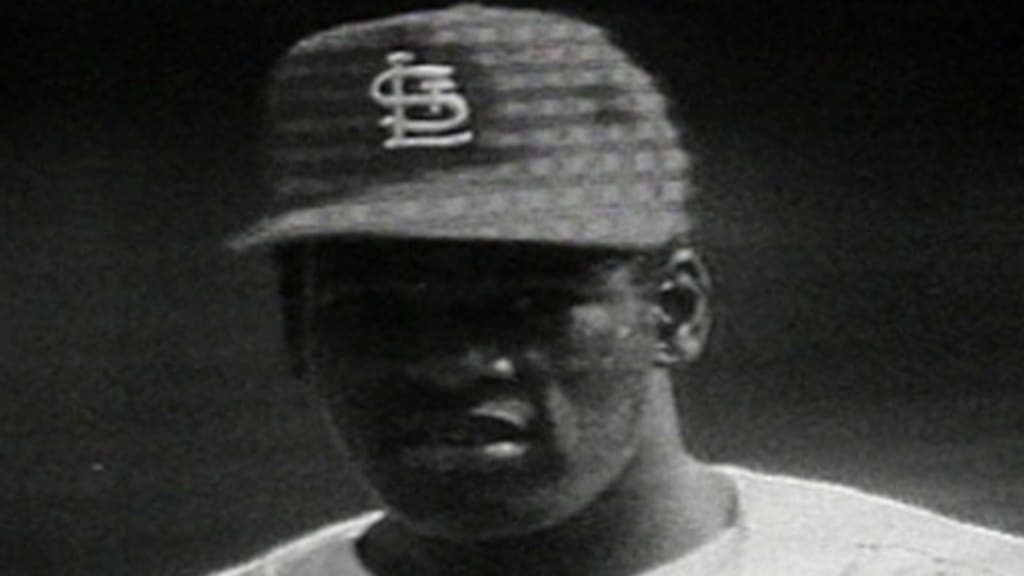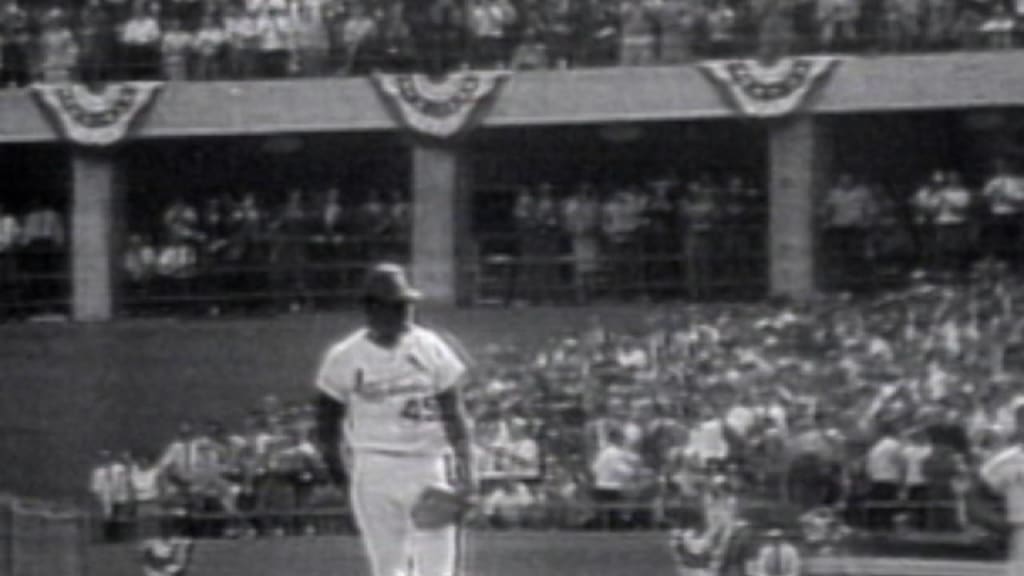Gibson's reputation for hitting batters deceiving
This browser does not support the video element.
Some years ago, I saw a baseball fan approach Bob Gibson at a gathering. The fan was a middle-aged man wearing a Cardinals hat, and he was obviously in awe, and he said more or less what fans have been telling Gibson for 40 or so years: "Oh, do I remember the way you pitched. I remember all those batters you hit. They were scared of you. The pitchers today, they couldn't hold a candle to you."
Gibson shook the man's hand, signed the autograph and thanked him.
And when he left, Gibson shook his head: "Is that all I did?" he asked. "Hit batters? Is that really all they remember?"
There has been a theme, one you will hear again and again in baseball, that times have changed and players just aren't as tough as they used to be. The pitchers today are afraid to pitch inside like Gibson. The pitchers today aren't willing to send a message like Gibson. The pitchers today won't hit a batter to let everyone know the rules ... the way Gibson did. And so on.
Gibson is often used the example. Gibson, the story goes, was ruthless. Hit you as soon as look at you. Yes, Gibson pitched in that time when players were tough, when pitchers demanded the inside part of the plate as their own personal property, when you knew as a hitter that if you dug in too willingly, if you got too comfortable, the next pitch was coming at your head.
This browser does not support the video element.
Well ... John Lackey has hit more batters in his career than Gibson did. So has CC Sabathia. Ervin Santana and Johnny Cueto will both pass Gibson, probably this year. Chris Sale has hit more batters in the past five years than Gibson did in his final 11 seasons combined. Twenty active pitchers have hit at least 14 batters in a season (Cueto has done it three times), something Gibson never did.
It's true that hit-by-pitch is not necessarily the ideal way to determine a pitcher's ferocity. Pitches hit batters for lots of reasons, some of them having nothing to do at all with message sending. Sometimes the pitch gets away. Sometimes the hitter is leaning over the plate. Sometimes the pitcher just barely misses a spot and the pitch just skims the player's uniform. Sometimes, especially in the 1990s, a hitter wearing body armor took the pitch off the pad. And, yes, sometimes there's purpose behind it. You can't get all the nuance in the sheer numbers.
But the numbers are stark -- pitchers hit many more batters now than they did in the 1950s and '60s, the supposed heyday of head-hunting. In the '50s, teams hit roughly .19 hitters per game -- so that would mean they hit one batter every five games.
In the 1960s, it jumped up to .22 hitters per game -- meaning pitchers hit one better every four or five games.
This decade, pitchers are hitting .33 batters per game -- one every three games.
This browser does not support the video element.
It's striking: The number of batters getting hit per game was pretty stable from 1947 until the early '90s. It peaked a little bit in the late '60s and dropped down a bit in the '80s, but it was in the same general ballpark. It was '93 when things began to change -- that year, more batters hit per game than ever before. It went up the next year and the next and the next and the next. In 2001, pitchers were hitting .39 hitters per game, or two hitters every five games. That was roughly double what it had been in the 1950s.
It came down just a little bit in the early part of this decade, but the past couple of years, it went back up again. You can talk about all the factors involved here, but the reality is: It's awfully hard to say pitchers used to throw inside more when pitchers are hitting many more batters now.
This browser does not support the video element.
"My impression, as a fan, is that modern pitchers are neither more nor less willing to throw inside than they were 50 years ago," baseball writer and historian Bill James said. "But they are much less willing to come high and inside. I think some pitchers 50 years ago would come inside and aim pretty high. I think the attitude about that is different than it was."
This sounds right to me ... though there is something larger here that several former players have talked about: The art of pitching high, they say, has been lost. Pitchers are so concerned about pitching down and away, down and away, down and away -- batters are hitting so many more home runs -- that they have generally learned to avoid pitching up. This is worthy of an entirely different story.
This one is about the mythology. Gibson resents, at least somewhat, the notion that much of his brilliance as a pitcher came because he was particularly mean and threw at hitters at an unprecedented rate. For one thing, it isn't true: Gibson never led the league in hit batters. He finished top six seven times, but he also finished top four in innings pitched seven times. The numbers simply do not bear out that Gibson was some sort of executioner on the mound; he certainly did not hesitate to challenge a hitter, and he hit his share of batters, but it's certainly not something that would look out of place today.
And for those who say, "Well, maybe Gibson didn't hit a lot of players, but he certainly knocked down a whole bunch," Gibson himself has this retort: "I hear all the time that I threw at hitters. It's ridiculous. If I threw at a batter, I hit him."
But more to the point, the mythology of Gibson as this headhunter obstructs the real reasons that he was so great. He had great stuff, he was a ferocious competitor, he was incredibly smart, he fielded his position brilliantly and he hit well enough to help his own cause. Sure, intimidation was in his tool kit -- everybody knows about the famous glare he would give hitters (Gibson said it was because he's nearsighted and couldn't see). But that was just one tool and a tool that he says he did not use often.
"Ah," Gibson said, "hitters don't get intimidated. That was just one of those things people said."
This browser does not support the video element.
All of which gets back to the main thing: The folklore about how much meaner pitchers used to be doesn't just downplay pitchers today, it downplays the older pitchers, too. It says that today's pitchers are soft and yesterday's pitchers won with fear. Both themes are silly. Today's pitchers have to face much deeper batting orders -- with extreme power hitters up and down the lineup -- and aren't getting through without attacking the hitters with fury.
But the idea that yesterday's pitchers won with fear is just a silly. There's an old line about stand-up comedy that swearing is a crutch, that anyone can be funny if they just throw out some four-letter words. But as numerous comedians have pointed out -- you go out there and say some four-letter words and see if anyone laughs.
Same thing here. If you think pitchers could ever get out the best hitters in the world out by scaring them with fastballs, you go out there and try it.

